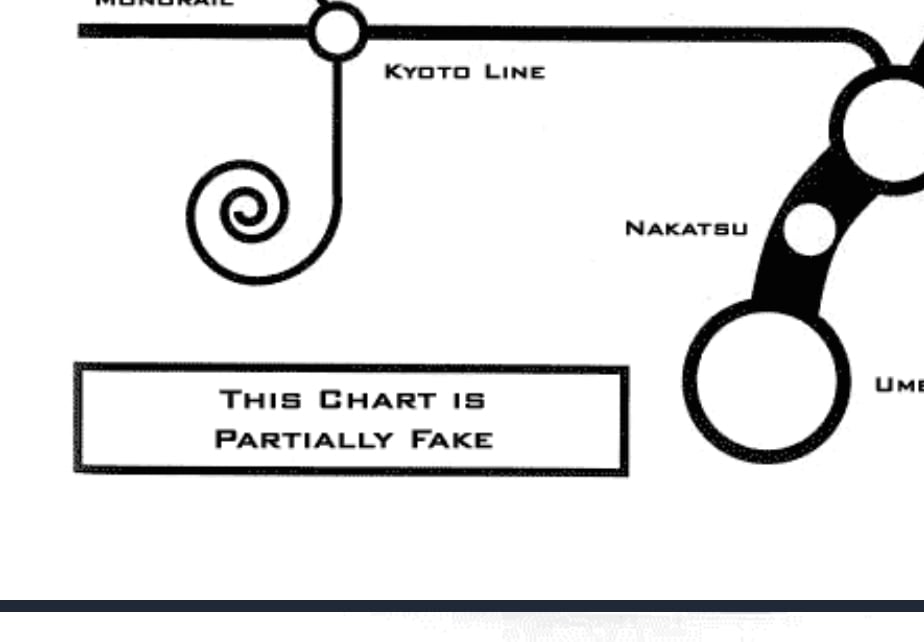As an Engineer with a Physics background I say the most ethical choice is the real numbers side as the tram, having no room to accelerate between victims, will quickly stop, whilst it’s more likely it can keep going for ever on the integer branch of the line.
A more effective vehicle for this would be a tank or maybe a steamroller.
(Note to self: keep this in mind if I ever become an Evil Overlord and need to execute large numbers of people in a gruesome manner)
I have a tangential question I have been wanted an explanation for:
If there are infinite universes, would there be infinite earth’s?
I remember (an) answer is infinite universes doesn’t necessarily mean infinite earth’s. A cool analogy of a CD rack was used when I read it, but I can’t find it. Does anyone else have an explanation and/or analogy for this?
Weirdly good timing, here’s a Kurzgesagt video on that exact question! Uploaded literally yesterday (or yester-er-day depending on time zones)
With infinite universes, every possible eventuality is realized an infinite number of times. There are infinite universes without earth and infinite universes with it.
Are there more universes with earth or more without
infinite Earths*
String Theory
Infinity cannot be divided, if it can then it becomes multiple finite objects. Therefore there cannot be multiple Infinities. If infinity has a size, then it is a finite object. If infinity has a boundary of any kind, then it is a finite object.
Infinity cannot be divided, if it can then it becomes multiple finite objects.
It really depends on what you mean by infinity and division here. The ordinals admit some weaker forms of the division algorithm within ordinal arithmetic (in particular note the part about left division in the link). In fact, even the cardinals have a form of trivial division.
Additionally, infinite sets can often be divided into set theoretic unions of infinite sets fairly easily. For example, the integers (an infinite set) is the union of the set of all integers less than 0 with the set of all integers greater than or equal to 0 (both of these sets are of course infinite). Even in the reals you can divide an arbitrary interval (which is an infinite set in the cardinality sense) into two infinite sets. For example [0,1]=[0,1/2]U[1/2,1].
Therefore there cannot be multiple Infinities.
In the cardinality sense this is objectively untrue by Cantor’s theorem or by considering Cantor’s diagonal argument.
Edit: Realized the other commenter pointed out the diagonal argument to you very nicely also. Sorry for retreading the same stuff here.
Within other areas of math we occasionally deal positive and negative infinities that are distinct in certain extensions of the real numbers also.
If infinity has a size, then it is a finite object.
Again, this is not really true with cardinals as cardinals are in some sense a way to assign sizes to sets.
If you mean in terms of senses of distances between points, in the previous link involving the extended reals, there is a section pointing out that the extended reals are metrizable, informally this means we can define a function (called a metric) that measures distances between points in the extended reals that works roughly as we’d expect (such a function is necessarily well defined if either one or both points are positive or negative infinity).
If infinity can be measured, by either size, shape, distance, timespan or lifecycle, then the object being considered infinite is a finite object. Infinity, nothing, and everything follow these same rules. If there are two multiple infinite objects side by side to each other, which means there is a measurable boundry that seperates them, then those objects aren’t infinite, they are finite objects, within an infinite space that contains them. Only the space that contains these objects is infinite. Any infinite numbers that are generated within this infinite space, regardless of where they originated within this space, belong to this single infinity. There is no infinityA or infinityB there is just infinity itself.
My degree is in math. I feel pretty confident in saying that you are tossing around a whole bunch of words without actually knowing what they mean in a mathematical context.
If you disagree, try the following:
-
What is a function? What is an injective function? What is a surjective function? What is a bijection?
-
In mathematics, what does it mean for a set to be finite?
-
In mathematics, what does it mean for a set to be infinite?
I’m willing to continue this conversation if you can explain to me in reasonably rigorous terms what those words mean. I’ll help you do it too. The link I sent you in my previous post that mentions cardinal numbers links you to a wikipedia page that links to articles explaining what finite and infinite sets are in the first paragraph.
To be clear here, your answer for 2 specifically should rely on your answer from 1 as the mathematical definition of a finite set is in terms of functions and bijections.
Here are some bonus questions for you to try also:
-
In mathematics, what does it mean for a set to be countable?
-
In mathematics, what does it mean for a set to be uncountable?
A finite universe, the one in which we live, can only produce finite objects. Those finite objects can only produce other finite objects. A finite object cannot create an infinite object, as the act of creation would be a starting point for the object, and if an object has a starting point or an end point, which are really the same thing, then the object is a finite object.
If a set of numbers originates from a starting point and moves away from that point in a seemingly infinite distance, and then you decide to traverse that set in the opposite direction towards the starting point, the starting point becomes an ending point, and if an object, in this case the set itself, has an ending point, it is a finite object. Finite objects cannot create infinite objects because the act of creation would negate their infinity. Infinity is neither created nor ends, nor does it have size, shape, or form.
None of this includes the correct answers to the questions I asked you. I’m not going to read anything else from you until you correctly answer the questions I asked.
I find it interesting that you have a degree in math, and apparently have never questioned a question. As I’ve demonstrated, in the posted problem, the statement “some Infinities are bigger than other infinities” is an illogical statement. The mere statement that there are multiple infinities, negates either objects identification as being infinite, and reduces both objects to finite objects, as the only way these objects can be determined to be seperate from each other is through a boundary that would impose a starting or ending point on each object, which in turn reduces them into finite objects.
I also find it interesting that you resort to gate keeping to try and control a situation that you are frustrated by. I was able to simply and clearly demonstrate my position. I also demonstrated the technique of: solving the problem by defeating its purpose. I’ve also demonstrated the difference in how a mathematician and an engineer attempt to solve a problem.
To me you have demonstrated:
-
You don’t know even the most basic definitions of the things you are trying to talk about.
-
You are possibly too willfully stupid to bother to learn said definitions.
-
You are capable of babbling incoherently about things you do not understand ad nauseum.
-
-
I’m not entirely sure I understand your comment, but the fact that there are more real numbers than natural numbers can be readily shown using something called cantor’s diagonal argument. It goes something like this:
Suppose the set of real numbers and natural numbers had the same size. Then we could write down an infinite list, where each line represents some real number written in it’s decimal representation. So something like
1: 3.14159265 2: 1.41421356 3: 0.24242424 ...This list goes on forever. We will now construct a new real number r as follows: The first number after the decimal point of r shall be different from the first number after the decimal point of the first number in our list, the second shall be different from the second decimal of the second number on the list, and so on (the name diagonal argument comes from this, we consider the entries on the diagonal from top left towards the bottom right).
The key point now is that this constructed real number is different from every single number on the list: After all, we have made sure it differs from each number on the list in at least one place. Therefore, it is impossible to write down the real numbers in such a way that each real number gets its own natural number: There are simply too few natural numbers for this. In particular, there are at least two different “sizes” of infinities.
The set, that has a measurable starting point, is a finite object. If infinity can be measured, then you have created a finite space, one that can be measured, within an infinite space, infinity itself, which cannot be measured. Infinity remains untouched and undivided. The sets that represent infinity are finite objects, that represent an infinite space, a representation which they can never truly achieve.
Maybe we should talk about what “infinite” means. I’d like to propose the following idea: a sequence of things is infinite, if there is always “one more” object to consider. We could also say that for any number of finite steps, there is always another object of the series we haven’t looked at yet.
As an example, the sequence of natural numbers would satisfy this: if I start considering the sequence 1, 2, 3 and so on, if I ever stop after finite time (say 1729 steps), I can always compute +1 to find another element of the sequence I haven’t seen yet.
Also consider the following: the set of all numbers between 0 and 1 is in some sense bounded. However, I can find an infinite sequence of numbers in this set: consider 1/1, 1/2, 1/3, 1/4, …
These numbers are always between 0 and 1, and are infinitely decreasing.
Perhaps the confusion comes from you talking about infinity as in a number which is larger than any real or natural number, while I’m talking about sizes of sets of infinite size. As I had demonstrated earlier, we can show the existence of uncountable infinite vs countably infinite sets, while such distinctions don’t really come up in limit theory and calculus.
Is it possible to get this thing to skid on both rails? You’ll only be killing an infinite number of people anyway.
That doesn’t kill any more people than if you just stay on the real number track.
build new tracks to make the trolley run on (possibly in circles).
I actually would like to choose the track where the number of people increases by one (so 1, 2, 3, 4…) and then the train will kill -1/12 people
PS Yes, I know this sum result is problematic, it’s only a joke
I pull the lever and invoke Zeno’s paradox to ensure the trolley’s position remains < 1 for eternity.
I kill the trolley driver. The Dead Man button makes that the trolley stops.
If we have infinite people, it wouldn’t be such a bad thing to lose a couple.
@tedu @science_memes @fossilesque Can we space them out so the frequency is the same? 😂
Was this an honest question? Because the answer is ‘no’. You can’t space them out or else the set of people on the lower track would be countable which is a smaller infinity than the ones of the real numbers.
To space them, you would have to take people of the track. Infinitely many. To be precise not all of them but as many as there are on the track.
Everybody dies, no matter what choice you make. It’s just a matter of time.
There are infinite numbers between 1 and 2, none of which are 3.
Then wouldn’t that make this statement false?
Which statement?
There are infinite numbers between 1 and 2, none of which are 3.
If there are infinite numbers, then there’s 3 in there somewhere. If 3 is not there then it’s not infinite.
Oh okay.
If there are infinite numbers, then there’s 3 in there somewhere.
No, this is not true. Just because you have infinitely many numbers in some collection, doesn’t mean one of the numbers in your collection has to be 3.
Look at the number line. There are infinitely many numbers on the number line between 1 and 2. For example 1+1/2, 1+1/4, 1+1/8, … are in there (among many others). But all of the numbers between 1 and 2 are strictly smaller than 3, so none of them can be 3.
Alternatively, there are infinitely many numbers strictly smaller than 3, none of which are 3 either.
If 3 is not there then it’s not infinite.
Well consider the set of numbers 3+1, 3+2, 3+3, 3+4, … (the set of integer numbers strictly larger than 3). This set of numbers is also infinite and does not contain 3. So a set being infinite doesn’t imply it must contain the number 3.
Ah, thank you for the explanation. That makes sense now.
Since there’s an infinite number of people to kill in either case I can just do nothing, and thus by inaction most of those infinite people will have more than enough time for someone else to rescue them. Maybe the State, that’s what they’re there for.
Unless the trolley is traveling with infinite velocity or the people have infinitely small mass, it would never make it past its first countable infinity of people. Therefore there is no difference.
I get that the answer is supposed to be “it doesn’t matter” but if you take time into account, it actually fucking does, and also makes it hugely obvious what the actual answer is.
from the picture this is true but from the statement alone both options are identical
I take the square root of the negative trolley, then use my imaginary streetcar to establish a complex track so I can start killing in an additional dimension.

Multi-axis drifting!?!?
Aw, yeah, that’s sick! I also choose this option.
Deja Vu!
This has everything:
- Parody of a popular franchise
- Trains
- Train infographics that add to the world building
- Drift racing
- Manga
This is one kaiju or sentai squad away from being peak Japan.
I’ve occasionally wondered at the origin of that image but never felt like looking into it. Thanks for the link, the whole thing is very funny! Really nails the Initial D parody!











